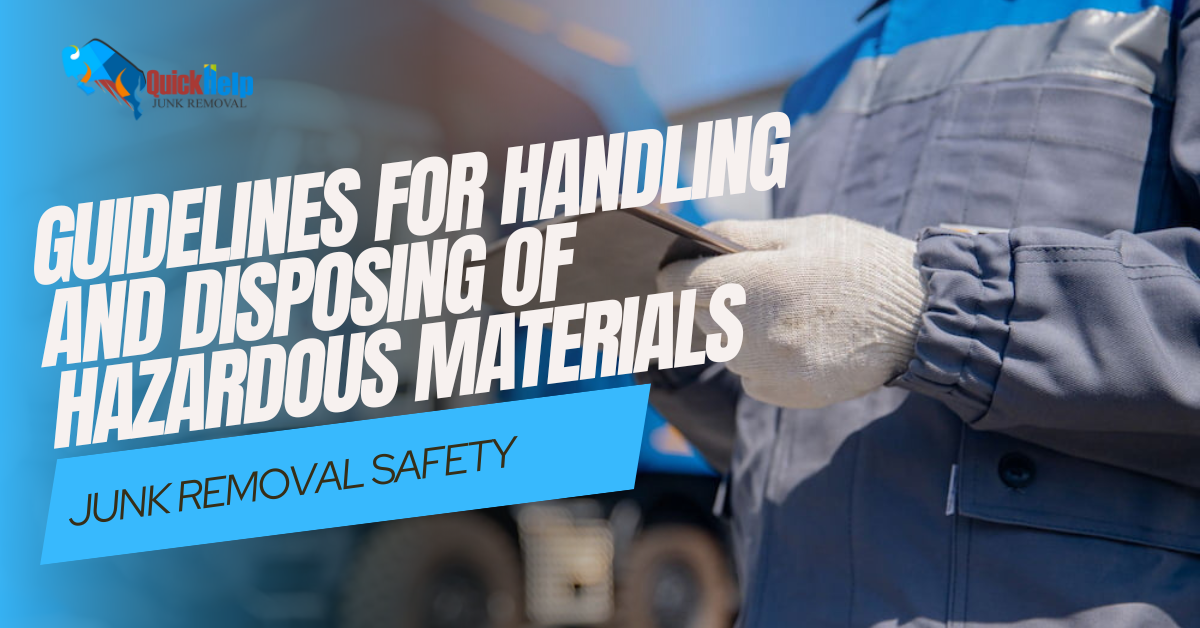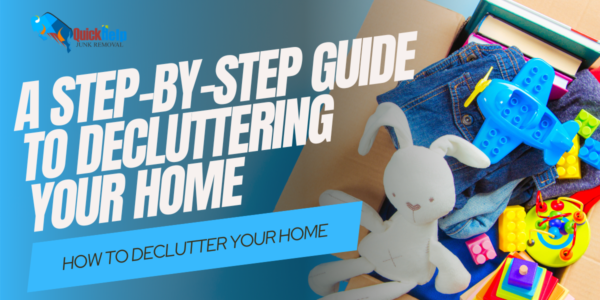Junk Removal Safety
Regarding Junk Removal Safety when it comes to junk removal, ensuring safety should be your top priority. While clearing out unwanted items from your home or workplace can be a satisfying task, it’s important to be aware of potential hazards, especially when dealing with hazardous materials. This comprehensive guide will provide you with essential guidelines for handling and disposing of hazardous materials during junk removal, ensuring the safety of both yourself and the environment.
1. Understanding Hazardous Materials
Hazardous materials encompass a wide range of substances that can pose risks to human health or the environment. Examples include paint, batteries, pesticides, cleaning agents, solvents, and more. It is crucial to identify and handle these materials properly to prevent accidents, injuries, and pollution.
2. Identify Hazardous Materials
Before beginning any junk removal project, it’s essential to identify hazardous materials. Start by looking for labels on products indicating their hazardous nature. Additionally, be cautious of items that have warning symbols or keywords such as “flammable,” “toxic,” “corrosive,” or “explosive.” By knowing what to look for, you can minimize the risks associated with handling these materials.
3. Separate and Secure Hazardous Materials
Once you’ve identified hazardous materials, it’s crucial to separate them from non-hazardous items to prevent cross-contamination and potential accidents. Create a designated area or use proper storage containers to ensure the safe containment of these materials. This step is crucial, as mishandling hazardous items can have severe consequences.
4. Handling Hazardous Materials Safely
When it’s time to handle hazardous materials during the junk removal process, take the following precautions:
- Personal Protective Equipment (PPE): Wear appropriate PPE such as gloves, goggles, masks, and protective clothing to safeguard yourself from potential exposure to hazardous substances.
- Ventilation: Ensure proper ventilation in the area to minimize the risk of inhaling toxic fumes or gases.
- Lifting and Carrying: Use proper lifting techniques when moving heavy or bulky hazardous materials to prevent strains or injuries.
- Teamwork: If the materials are particularly heavy or require multiple people to handle, seek assistance from others to avoid accidents.
5. Disposal of Hazardous Materials
Proper disposal of hazardous materials is vital to protect the environment and prevent contamination. Here are some guidelines to follow:
- Research Local Regulations: Check your local regulations and guidelines regarding the disposal of hazardous waste. Different jurisdictions may have specific requirement.
- Professional Assistance: For complex or large-scale projects involving hazardous materials, consider hiring a reputable junk removal and dumpster rental company with expertise in handling and disposing of such materials. They can ensure compliance with regulations and offer the most appropriate disposal methods.
- Recycling Centers and Facilities: Many communities have designated recycling centers or hazardous waste facilities that accept specific materials. Research local options and utilize these facilities to dispose of hazardous waste properly.
- Never Dump Hazardous Materials: Under no circumstances should hazardous materials be dumped in regular trash bins, poured down drains, or released into the environment. Such actions can have severe consequences for both public health and the ecosystem.
Here are some frequently asked questions (FAQs)
Examples include paint, batteries, cleaning agents, pesticides, motor oil, fluorescent bulbs, and electronics containing harmful components like lead or mercury.
No, hazardous materials should never be disposed of in regular dumpsters. They require specialized handling and disposal methods to ensure safety and environmental protection.
If you encounter materials you are unsure about, contact your local waste management or environmental agency for guidance on proper identification and disposal.
Yes, many communities host hazardous waste collection events where residents can drop off their hazardous materials for proper disposal. These events are typically held a few times a year.
Junk removal can be a productive and satisfying task, but it’s crucial to prioritize safety, especially when handling hazardous materials. By following the guidelines outlined in this article, you can ensure the safe handling and proper disposal of these materials, protecting yourself, others, and the environment. Remember, when in doubt, seek professional assistance from a reliable junk removal and dumpster rental company to guarantee compliance with regulations and best practices. Stay safe and keep the environment clean!




